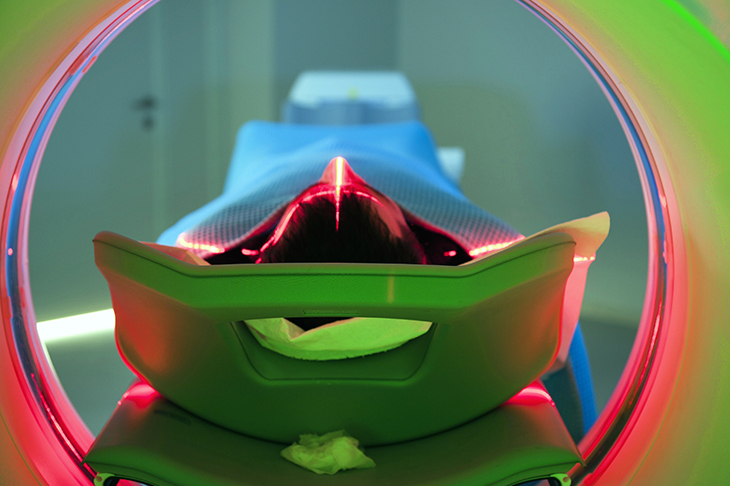It’s Asco week in Chicago: the biggest meeting of clinical oncologists in the world. McCormick Place convention centre, the largest in the US, is filled to its 2.6 million square foot capacity with people talking about cancer. And one of the hottest topics being discussed is something called proton therapy, a possible new tool in the anti-cancer arsenal.
But does it actually work? Given that two private proton therapy machines have already been built in the UK, and that two more NHS machines are on their way at a cool £250 million, you’d think we’d know. The sad truth is that, for many cancers, the medical jury is still out as to how helpful these machines actually are.
Proton therapy is a new kind of radiotherapy. Radiotherapy has been successfully used to treat cancer for decades. In essence, it’s a way of using targeted energy to destroy tumours, with standard radiotherapy machines using light particles (photons) as their mode of attack.
The problem with using photons is that they’re extremely high energy. Unfortunately, the same high energy that allows them to destroy tumours also means that they travel deep into the body, harming whatever comes into their path.
Fortunately the photons’ energy diminishes as they penetrate deeper into the body and so, with careful planning, most of the force is spent on the tumour and less hits the surrounding healthy tissue. Nonetheless, radiotherapy can still cause side effects to the healthy tissue. Depending on where the tumour is — for example, in the brain — the side effects can potentially be so harmful that doctors need to think carefully to determine if the radiotherapy will cause more harm than good.
This is why proton therapy appeals. Protons behave in a very different way to photons: put simply, they’re less energetic. Therefore, in theory, unlike photons, the protons hit the tumour with almost all of their energy and have very little left to cause damage to the healthy tissue beyond the tumour. This makes proton therapy potentially much safer than normal radiotherapy, but without any diminished loss in cure.
Why the caveats in the last paragraph? The research on proton therapy isn’t in yet. Despite there being around 67 proton therapy machines already built worldwide (not including the two new NHS ones currently under construction), definitive answers to the two vital questions of whether proton therapy is better and safer than normal radiotherapy for most cancers aren’t known yet.
For some very rare cancers — brain tumours, particularly in children, or in very sensitive areas like the eye — proton therapy is the recommended treatment, predominantly because of the potential damage normal radiotherapy can do. But for the most common types of cancer, doctors are still waiting on the results.
Prostate cancer is a typical example. It is the second most common cancer in the UK, with Prostate Cancer UK estimating that one in eight men will be diagnosed at some point in their lives. The good news is that if the cancer is caught early enough, many men can be cured through a combination of hormonal therapy, chemotherapy and radiotherapy. In other words, with the right treatment plan, there is a good chance of survival, meaning that there should be significant new evidence before patients decide to veer off this treatment course.
NHS England recognises this. In its clinical commissioning policy, it states that it has ‘carefully reviewed the evidence to treat prostate cancer with proton beam therapy. We have concluded that there is not enough evidence to make the treatment available at this time.’
This cautionary approach is echoed in the guidelines of America’s official radiotherapy society, Astro, which recommends proton therapy for prostate cancer treatment only as part of a clinical trial or registry investigation: in other words, as part of the evidence-collecting process. So it’s not that the evidence for treating prostate cancer with proton therapy is ambiguous: it’s that it isn’t there.
So if this is the case, why do patients with prostate cancer in the US form the group of patients who are most frequently referred for proton therapy? Why do private British radiotherapy clinics advertise their proton therapy services using stories of men with prostate cancer?
In other words, why are private proton therapy providers still actively promoting their untested services to patients who already have a good chance of survival? As always, the answer is money. Proton therapy machines are extremely expensive to build but the incentives they provide can be worth it. Some American proton therapy centres generate profits of $50 million annually.
The American model, whereby doctors are recompensed according to the services that they prescribe, provides a possible clue as to the increasing number of referrals: it’s more lucrative for the prescribing doctors.
Prostate cancer demography also helps. The disease most frequently afflicts older men, who tend to be the most capable of affording to pay out of pocket for medical services. This fact is not lost on those providers of prostate cancer treatment around the world that are now marketing their services privately.
But these concerns have not escaped the medical press, with leading journals repeatedly sounding the alarm that we need more evidence before spending vast sums on these costly potential white elephants.
Professor David Collingridge, editor of the Lancet Oncology, the world’s leading cancer journal, commented to The Spectator that the ‘economic pressures to recoup investment [in proton therapy units] create perverse incentives not based purely on clinical value’. The data backs this up: this year’s Asco meeting sees the presentation of work showing that most proton therapy providers’ websites contain information and advertise claims that are inconsistent with international guidelines.
Private proton therapy services present themselves as offering groundbreaking new treatment to patients who might fare better by sticking with old-fashioned treatments such as photon-based radiotherapy. But cancer patients, being under great stress, are among those most likely to clutch at expensive straws.
For the moment, there is at least one resounding message: don’t pay for proton therapy yourself, no matter how swish the websites might be.
Got something to add? Join the discussion and comment below.
Get 10 issues for just $10
Subscribe to The Spectator Australia today for the next 10 magazine issues, plus full online access, for just $10.
You might disagree with half of it, but you’ll enjoy reading all of it. Try your first month for free, then just $2 a week for the remainder of your first year.














Comments
Don't miss out
Join the conversation with other Spectator Australia readers. Subscribe to leave a comment.
SUBSCRIBEAlready a subscriber? Log in